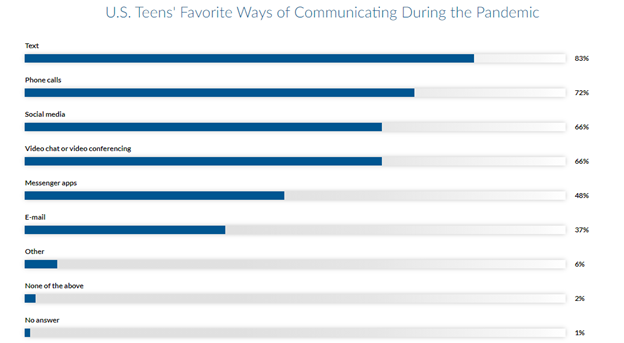How many communications channels does your business use to engage with customers? Based on numbers alone, businesses can’t afford to miss out on Facebook Messenger’s 1.3 billion users and Twitter’s reach of over 69 million users in the US. Aside from social media, chances are you also have an email account for customer queries. Yet, there is an effective still often overlooked communication channel. As a business, are you taking advantage of using texting?
Believe it or not, business texting—good old SMS and MMS—actually improve the customer experience your brand provides. Among the many channels used by companies to communicate with clients, in some aspects, SMS and MMS can improve customer experience more than technically advanced options for a number of reasons.

Customers Will Read Your Messages
On average, people only read 20% of their emails but open and read 90% of their text messages—and that’s within three minutes of receiving them. So, regardless of whether you want eyeballs on your latest promo or you have an urgent message to a specific customer, the numbers indicate that business texting is your best bet to reach them.
In comparison, other communication channels are more or less categorized between marketing promotional blasts and one-to-one correspondence. For instance, Twitter is geared more towards sharing marketing materials or additional useful insights to a larger audience: customers get a feed of what their followed brands are blasting. Do that on Messenger, however, and you could easily alienate your clients. Most people have Messenger profiles directly linked with their Facebook accounts and typically consider conversations within the app more personal. Messenger is reserved more for one-on-one chats with customers with actual queries and not just people on the lookout for the latest thing to like or share. Email offers a more formal appeal that doesn’t lend itself well to quick queries where customers are looking for answers in minutes.
There is simply no other communication channel that offers the incredibly high open and read rates of SMS and MMS.
Business Texting Bridges Gaps in User Experience
The sheer simplicity of SMS or MMS texting eliminates the user barrier because of technical difficulty. In other words, everyone from Baby Boomers to Millennials can easily use texting and would actually prefer it.

Technologies used by teens in the US to stay connected to friends and family they no longer see in-person during the coronavirus pandemic in April 2020. (Image Source)
According to research by Statista, teenagers in the US much preferred texting compared to calling, social media, and messenger apps to communicate during the pandemic lockdowns, when activities in all these channels naturally increased.
Meanwhile, a survey by the AARP found that 70% of adults aged over 50 own a smartphone and are on social media. Yet, for those aged 50 to 69, text messaging is the “tech tool most used to stay connected,” overtaking email as a preference.
Customers Value Genuine One-on-One Communication
SMS texting is usually an intimate mode of communication. It’s one approach companies use to foster their relationships with their customers. It is essentially an ideal channel for customer relationship management (CRM).
Even if you don’t have a CRM strategy in place to maximize the value of SMS and MMS as a communication channel, the back and forth that business texting affords creates a one-to-one experience for customers who find value in being personally serviced even among thousands or even millions of other users. They know you can be reached and can easily reply in an interaction that is genuine and not canned.
Of course, even canned responses provide value customers can appreciate. A quick automatic response that answers your customer’s query keywords can give the user a fast service. This provides text messaging with an advantage compared to Messenger and email.
Centralizing Business Messaging Under One Contact Number Improves Brand Recall
Among the details customers often recall about a business are their brand name, logo, tagline, and contact number. While Twitter handles and Facebook brand page and Messenger profiles are ubiquitous nowadays, a central contact number can unify incoming customers’ communications and improve their user experience.
Through business texting solutions, customers no longer have to search for your company’s Twitter or Facebook accounts or like and follow your business pages to get in touch. Texting software allows customers to text into your landline or 1-800 toll-free numbers, simplifying the contact channels and making your business readily available.
Texting’s Immediate Accessibility and Ease of Use Provide Great User Value
SMS is by far the simplest, straightforward, and accessible method of communication by phone for clients, without requiring an online connection or smartphone. This immediately gives business texting an advantage when it comes to customer experience.
Textel solutions are designed to simplify the way companies connect with their customers. Our integrated cloud platform gives your customers a smooth and great experience, enables texting to toll-free and landline numbers, manages multiple text conversations, sends images, documents, and emojis. You can learn more about how Textel provides a complete texting messages solution. Start leveraging a texting message platform that takes your customers’ experience to the next level.
If you would like to learn more about optimizing your customer experience with business texting, contact us.


